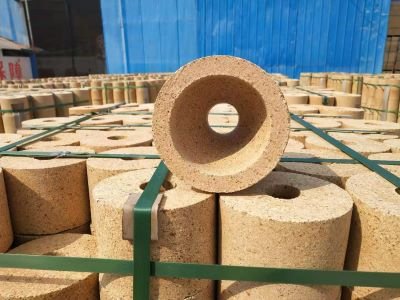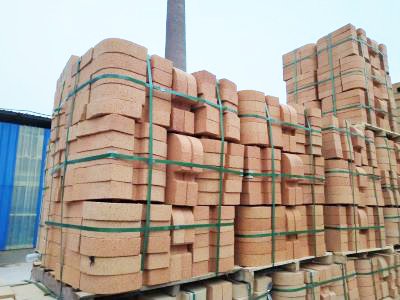As core equipment in high-temperature industries, kilns rely on refractory materials for their stable operation. Clay bricks, with their unique properties, serve as a key protective barrier for kiln inner walls.
1.Structural support: resist high temperature deformation and mechanical load
First, clay bricks provide a solid structural foundation for the kiln.

Kilns must withstand significant thermal stress and the weight of materials in high-temperature environments. Clay bricks, with their high mechanical strength and thermal stability, effectively resist softening and deformation caused by high temperatures.
Furthermore, their dense microstructure creates a tight bond between the bricks. This further enhances the kiln’s overall compressive strength, preventing equipment failures caused by local collapse.
2.Thermal insulation: reduce heat loss and shell damage
Secondly, the thermal insulation properties of clay bricks significantly reduce heat loss from the kiln.
Their low thermal conductivity (typically 0.6-1.0 W/(m·K)) effectively slows the transfer of high internal temperatures to the external environment. This reduces energy waste and protects the metal components of the kiln shell from damage caused by high temperatures.
More importantly, this type of brick has a large heat capacity and can absorb or release some heat when the temperature fluctuates, thereby buffering the impact of thermal stress on the furnace body and extending the service life of the kiln.
3.Anti-chemical corrosion: resist slag and gas corrosion
Clay bricks also offer excellent resistance to chemical attack.

Kiln interiors often contain acidic gases (such as SO₂ and CO₂) and alkaline slag produced by fuel combustion. However, the primary components of clay bricks, silicon oxide (SiO₂) and aluminum oxide (Al₂O₃), form a stable ceramic phase at high temperatures, preventing the penetration of harmful substances.
This chemical stability ensures that the bricks maintain their structural integrity even in long-term exposure to corrosive media, preventing erosion and spalling of the interior walls.
4.Heat resistance and stability: resistance to thermal shock and cracking
Finally, clay bricks have a low coefficient of thermal expansion and are less susceptible to sudden changes in volume during repeated heating and cooling, making them highly resistant to thermal shock.
Sudden temperature fluctuations during kiln startup and shutdown can easily cause cracking in the material. However, clay bricks, through their slow thermal expansion and contraction, effectively disperse thermal stress, reducing the occurrence of cracks and ensuring stable kiln operation under frequent operating conditions.
In short, clay bricks protect kilns from high temperature, stress and environmental damage in all directions through multiple functions such as structural support, thermal insulation, resistance to chemical corrosion and heat stability. They are an indispensable “safety guard” in high-temperature industries.
